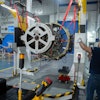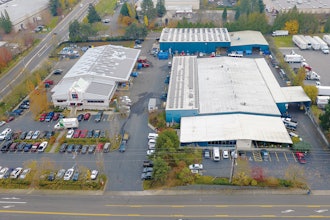DETROIT (AP) -- A new contract between Ford Motor Co. and the United Auto Workers union will raise the automaker's labor costs by less than 1 percent a year, reaching a company goal of holding costs fairly steady, executives said Thursday.
The four-year deal will raise costs by $280 million this year and around $80 million per year after that, but the increases will be offset by higher factory efficiency, other wage and benefit changes, and by hiring more workers at lower wages, the executives told reporters and industry analysts.
Ford's 41,000 union workers approved the contract Wednesday. They won't get annual pay raises, but this year they will get $6,000 signing bonuses, about $3,750 in profit sharing, and another $1,500 for inflation protection.
The deal also sets Ford up for a credit rating increase to investment grade status, and it opens the door to a possible dividend on the company's common shares, although Ford isn't ready to announce anything, Chief Financial Officer Lewis Booth said. Investment grade status would cut the company's borrowing costs with lower interest rates.
"We think this will be favorably received because of the competitiveness of the settlement," Booth said on a conference call Thursday.
Ford lost its investment-grade rating in 2005, when it was deeply in debt. It borrowed $23 billion in 2006 to get through the recession and fund a huge restructuring plan. The company had $14 billion in debt as of June 30.
Also under the UAW agreement, Ford also expects to add 5,750 jobs, mainly with more shifts at factories that make cars and trucks that are selling well. New hires will get pay raises to $19.28 per hour, but they'll still make far less than longtime UAW workers.
At present, the company has few workers at the lower wage rate. It expects that to rise to at least 8 percent of the factory work force by 2015. Under the contract, Ford can pay up to 27 percent of its factory workers at the lower rate, but reaching that level depends on how many new jobs are added and how many workers take early retirement offers. Ford hopes to replace retirees with lower-cost new hires. About 23 percent of Ford's factory workers, or around 9,400 employees, are eligible to retire, but Ford doesn't expect that many will leave.
Ford said its labor costs will rise this year because it must pay the signing bonuses and profit-sharing based on the company's first-half performance, but the increase will be smaller in the final three years of the contract. The company would not disclose its total labor costs.
John Fleming, Ford's vice president of global manufacturing and labor affairs, said the union agreed to shift changes that will let Ford run its factories for more hours each week, and that's the key to keeping labor cost increases to a minimum.
Currently, most Ford workers are on eight-hour shifts. If a plant runs around the clock on three shifts, there's little time for maintenance, and the company has to pay overtime for weekend work to make more cars if sales are strong. Under the new contract, all factories can go to 10-hour shifts four days per week, so plants run 20 hours per day, seven days per week with three shifts, Fleming said. That means factories are at work more hours, yet there's time for maintenance, and overtime costs are avoided, he said.
"It's all about utilization" of the factories, he said.
Also, the UAW agreed to a team concept where workers respond immediately to fix equipment problems instead of waiting for skilled trades employees such as electricians or pipe fitters to arrive, he said.
Ford shares slipped 9 cents to $11.51 in midday trading Thursday.






















